Chang'e-4: China Moon probes take snaps of each other
- Published
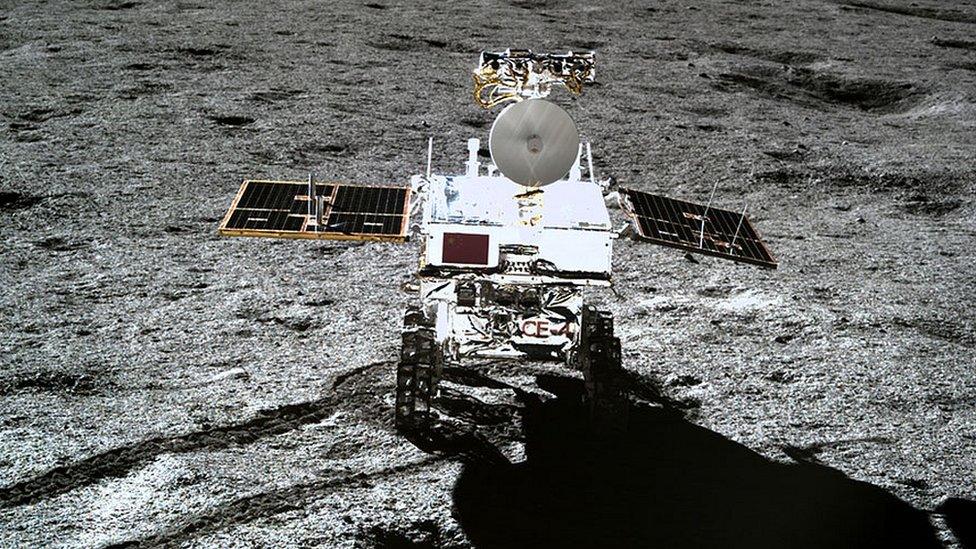
An image of the rover taken with the lander's terrain camera (TCAM)
A Chinese rover and lander have taken images of each other on the Moon's surface.
The Chinese space agency says the spacecraft are in good working order after touching down on the lunar far side on 3 January.
Also released are new panoramic images of the landing site, along with video of the vehicles touching down.
The rover and lander are carrying instruments to analyse the region's geology.
The Chang'e-4 mission is the first to explore the Moon's far side from the surface.
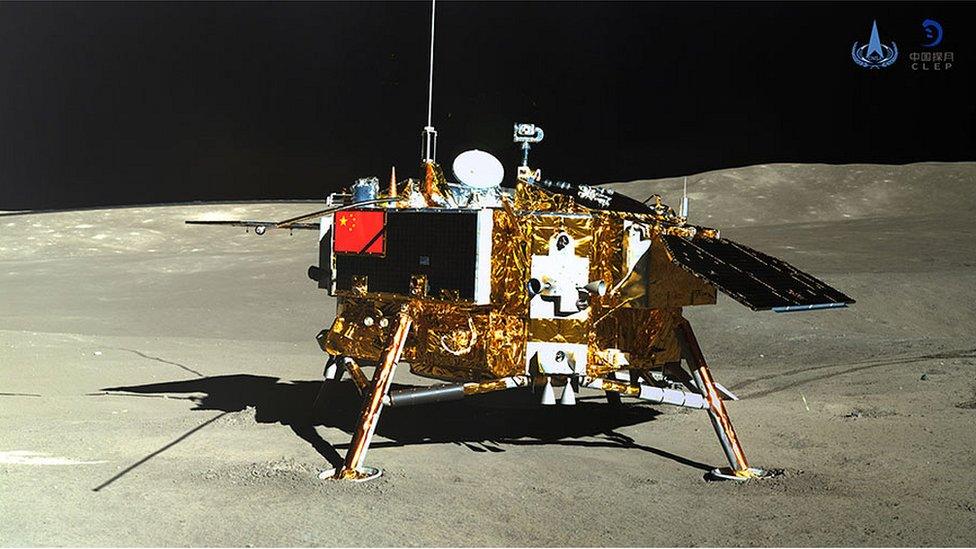
A picture of the lander taken by the rover's panoramic camera (PCAM)
The rover has just awoken from a period on "standby".
Controllers placed it in this mode shortly after the touchdown as a precaution against high temperatures, external, as the Sun rose to its highest point over the landing site.
Those temperatures were expected to reach around 200C. But the Chinese Lunar Exploration Program (CLEP) said that as of the morning of 11 January, the Yutu 2 rover, its lander and the relay satellite were all in a "stable condition".
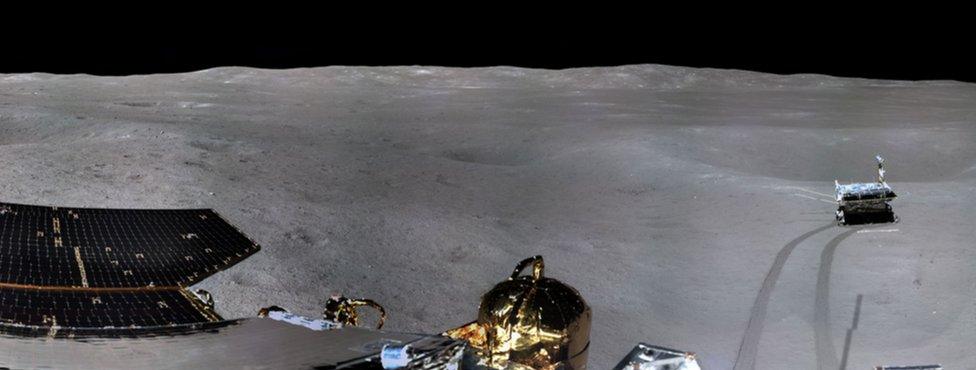
Part of the cylinder projection of Von Kármán crater from one of the lander's cameras
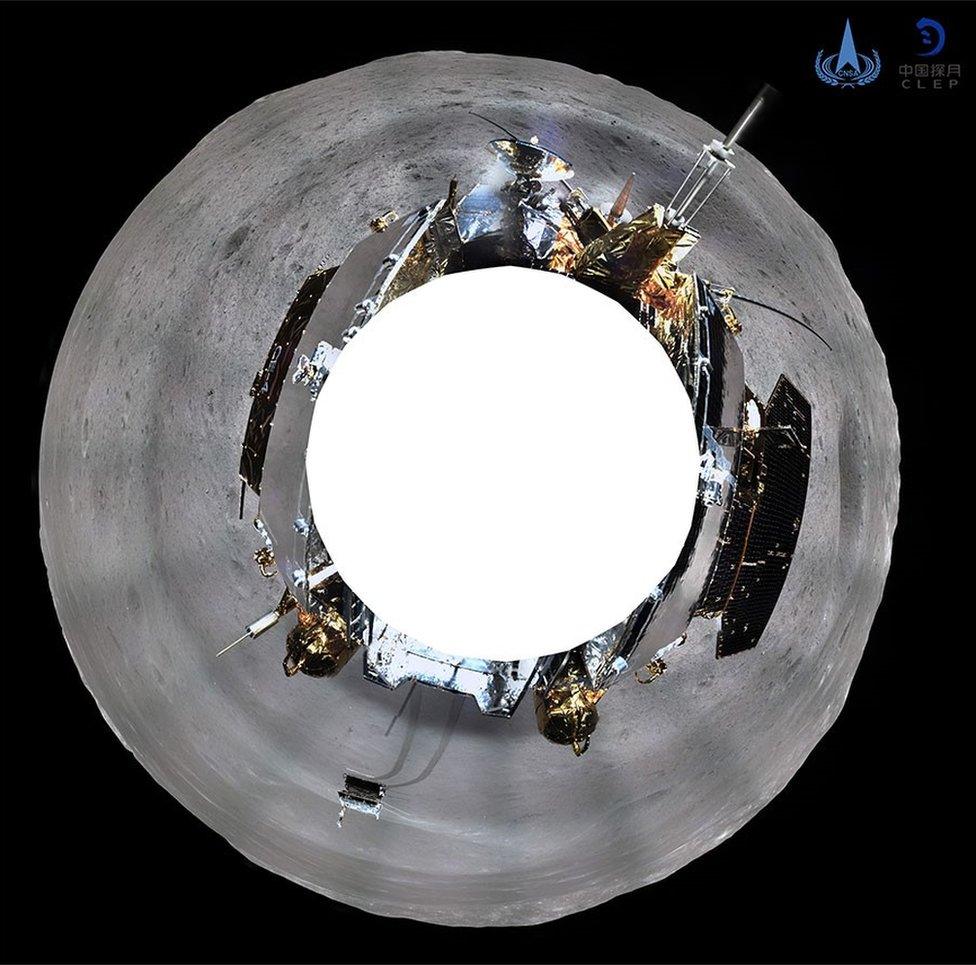
Azimuth projection of the landing site from one of the cameras on Chang'e-4's lander
The panoramic images show parts of the static lander and the Yutu 2 ("jade rabbit") rover, which is now exploring the landing site in Von Kármán crater.
CLEP, which released the images, external, said in a statement: "Researchers completed the preliminary analysis of the lunar surface topography around the landing site based on the image taken by the landing camera."
In contrast with previous images from the landing site, the panoramic image has been colour-corrected by Chinese researchers to better reflect the colours we would see if we were standing there.
Online commentators had pointed out that these earlier, unprocessed images made the lunar landscape look reddish - a far cry from the gunpowder grey landscapes familiar from other missions to the surface.
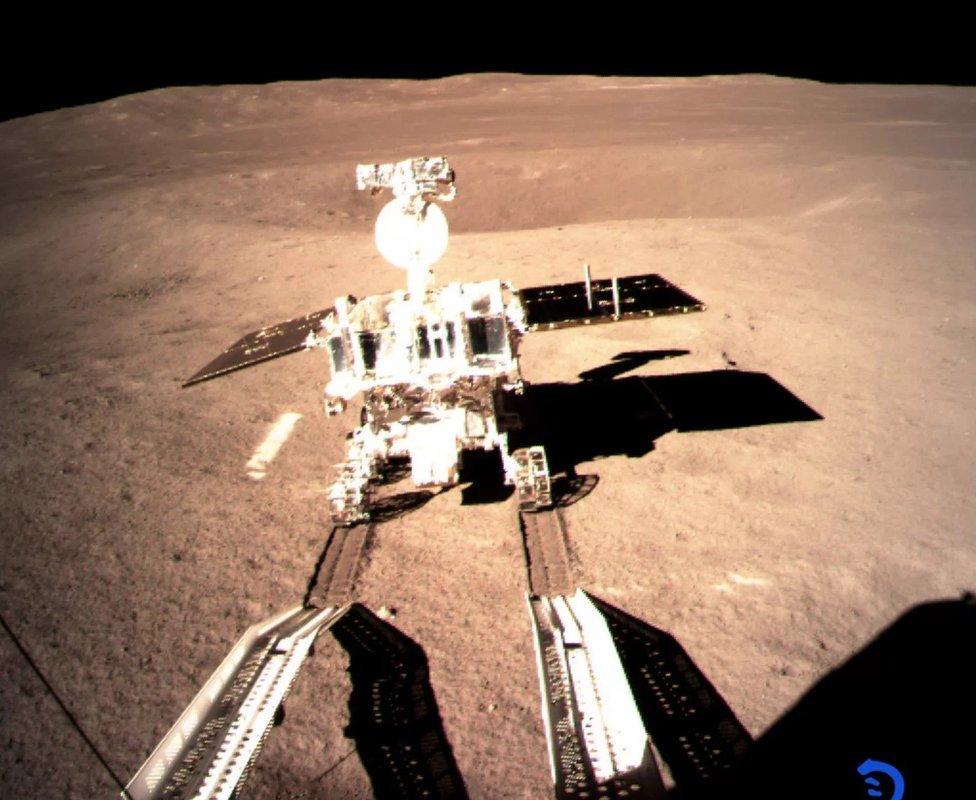
Raw images made the lunar surface appear red; the new images have been calibrated
In an article for The Conversation, external, Prof Dave Rothery, from the Open University in Milton Keynes, observed: "In the raw version, the lunar surface looks red because the detectors used were more sensitive to red than they were to blue or green."
Chang'e-4 was launched from Xichang Satellite Launch Centre in China on 7 December. It touched down at 10:26 Beijing time (02:26 GMT) on 3 January.
Because of a phenomenon called "tidal locking", we see only one face of the Moon from Earth. This is because the Moon takes just as long to rotate on its own axis as it takes to complete one orbit of Earth.
The far side is more rugged, with a thicker, older crust that is pocked with more craters. There are also very few of the "maria" - dark basaltic "seas" created by lava flows - that are evident on the more familiar near side.
Because there's no way to establish a direct radio link to Earth from the far side, the spacecraft must bounce data off a relay satellite, called Queqiao (or magpie bridge), which orbits 65,000km beyond the Moon, around a so-called Lagrange point.
CLEP said: "The ground receiving image was clear and intact, the Chinese and foreign scientific loads were working normally, and the detection data was valid."
Space News reported that the rover would be put into a dormant state on 12 January, to coincide with the lunar night-time, when temperatures could drop to around -180C.
During this time, the rover would have limited functions.
Follow Paul on Twitter., external